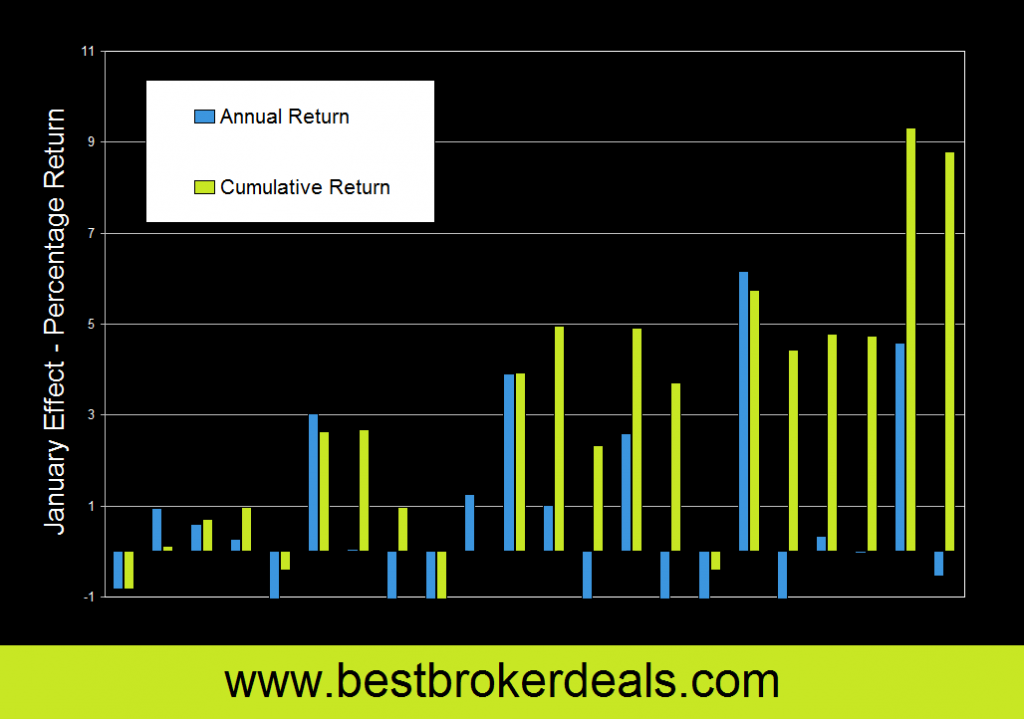
What is the January Effect?
The ‘January Effect’ refers to a seasonal tendency whereby stocks tend to rally in the first month of the year. In the past this was attributed to a need for investors to close out positions in December to create tax losses which could be used to offset capital gains; in the new year these investors begin to accumulate stocks once more, causing market prices to rise.
Because many investors now use tax-sheltered retirement vehicles, the rationale behind this calendar effect has been diminished somewhat in recent years, but we set out to discover whether this tendency still holds and whether the January Effect can be considered useful information to incorporate into a trading plan . . .
Do Stocks Really Rally in January?
For this study we looked at the returns you would have achieved if you’d held a long position in the S&P for the first week of January each year.
- The results shown cover the last 22 years of trading.
- You’ll see two colors on the histogram: the blue bars show the return for each year, and the green bars show the cumulative return (or what your equity curve might have looked like).
- Returns are expressed as percentages with no compounding.
- No deductions have been made for slippage or commissions, so the study is indicative only.

This would seem to suggest that the January Effect remains a fairly dependable tendency, but there are a number of red flags requiring further investigation before any money could be intelligently committed under this premise.
Most of the gains come from just a handful of months in which unusually high returns in excess of 3% were seen. There is nothing wrong with this if a proclivity for outlying moves in this month are determined to be a source of alpha, but this is very different to a ‘calendar effect’ that could be reasonably depended upon year after year.
The study covers just 22 years (as far back as data for SPY is available from our broker). This is not really a statistically significant sample size, although it does include two bear markets and charts the period in which taxable retirement plans have declined.
We haven’t provided any measure for ‘normal’ weekly returns against which to compare the January Effect results. As a rough guide, however, we’re seeing an average return over the period of around 0.39% for the strategy, where the first trading week of the month has, on average over this period, produced returns of just 0.21%.
What About Small-Caps?
As smaller investors typically hold more small and mid-cap stocks, the January Effect has often been stated to be more prevalent in indexes such as the Vanguard Small-Cap (VB) and Mid-Cap (VO).
We actually found little evidence to support this in our study, and significantly greater profits were seen in the large cap indices such as SPY and DIA in the period shown.
Show Me the Money!
Whilst the January Effect certainly seems to be something more than apocrypha, at least in recent years, we would advise that you do your own research and use returns dating back much further than we have in your testing, before considering risking any money on this concept.
In particular, we would suggest that this seasonal tendency be incorporated into a strategy in which other signals to trade are present, alongside stringent risk management measures, and not as a system in its own right.
Whether or not you are a beneficiary of the January Effect in the New Year, we wish you the very best for your trading in 2015!
| View similar articles about investing in stocks: Stocks Knowledge Base |
